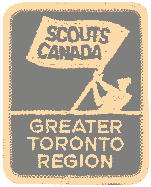 |

www.gtrsi.com
|
4. Planning
Effective planning is usually the result of seven specific steps.
- Consider the task. This involves what has to be done, who does what, when, where, and how.
- Consider the resources. What time is available? What are the skills of the group? What equipment and supplies are needed and available? What other items should be considered?
- Consider alternatives. What happens if something goes wrong? What are the emergency procedures? What is the alternate plan? Could the alternate plan be better than the original plan?
- Reach a decision. Who has the responsibility? Is a poor decision better than no decision? Is no decision a decision? Is a group decision best? A decision usually is needed at every step in the process.
- Write down the plan. The act of writing down an action plan may cause it to be revised or refined. The final plan might need considerable discussion.
- Put the plan into action. All too often, great plans are formed but never followed.
- Evaluate. Evaluation must take place all during this process. As each step is taken, it is evaluated against the previous steps to assure that the original task is still being considered.
In many ways, the steps for planning are similar to those for problem solving. Solving a problem is a type of planning, developing a plan is a type of problem solving. Substitute the word problem for the word task, and the seven steps can be used in either case.
When faced with a specific project to complete or a problem to solve, a process known as "verbal rehearsal" works well and is easily understood by boys. Here the members of the group literally "talk it up" as they decide how to approach the project or problem. As in classic problem-solving, seven steps are involved.
- What is the problem? A problem is any situation that a group may need or want to do something about. A clear understanding of the problem. is needed before the group can set a goal.
- What's our goal? A goal redefines the problem into a positive statement that answers the question, "What do we want?" A goal must be important to the group and must be realistic, not based on wishful thinking. A Seal should require the group's best effort, and members should feel good after reaching it.
- Stop and think. Here the group should stop talking and allow each person to examine the problem and goal before continuing to the next step. Often boys--and adults--take the first suggestion that is offered and jump directly into action. If group members take a few moments to think and form their ideas. they will be able to add some original thought to a plan to be followed.
- Make a plan. A good planner is always looking for options. The ability to think of a large number of possible pathways to reach a goal is an important skill. "What happens if... ?" examines the consequences of a particular course of action. For each alternative there are pros and cons. Once the alternatives and consequences have been discussed, a decision is made on a start-to-finish plan.
- Do it. Action must follow the planning. if the group has discussed the plan in enough detail, each member will know how to proceed.
- Keep at it. Nothing worthy of achieving is gained without endurance. The group must recognize that before a plan is abandoned, sustained effort is needed. Sometimes only a small adjustment in the plan is required to make it work.
- How did it go? Was the goal attained? Did we give our best effort? What might have been changed? It is important to evaluate the entire problem-solving process so that the result will be a better plan next time.
Wood Badge Skills Index
|
|
|
Disclaimer: Anything posted to this Home Page
are the opinions of the individuals who posted them
and are not the views of Scouts Canada.
|


